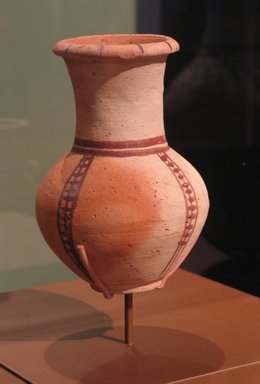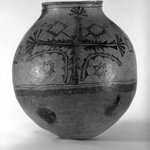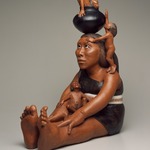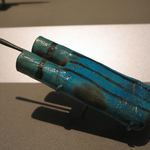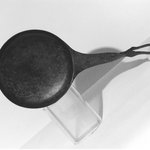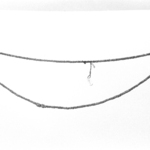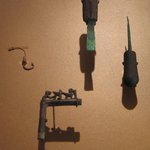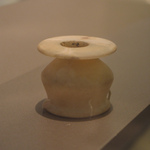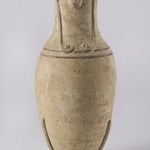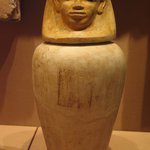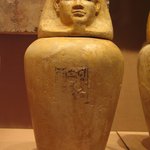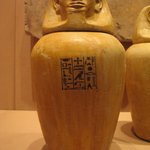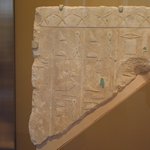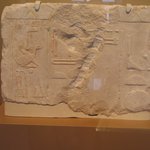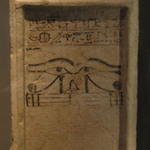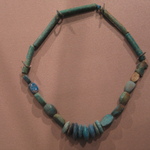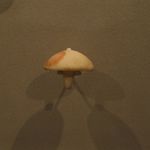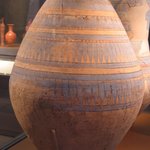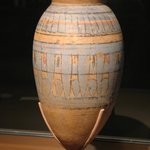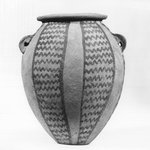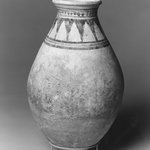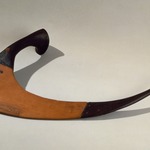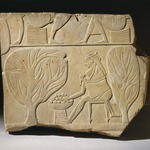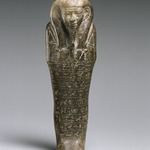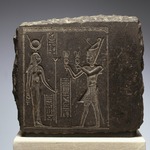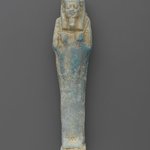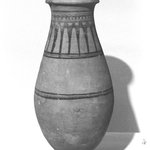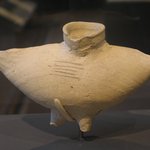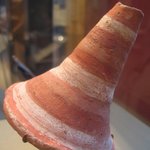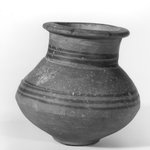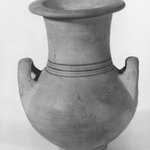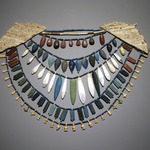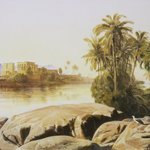
Pitcher Imitating Cypriot and Western Asiatic Jug
Egyptian, Classical, Ancient Near Eastern Art
On View: Egyptian Orientation Gallery, 3rd Floor
Pottery Manufacture
Available materials, construction technique, and even social status all played a role in the manufacture of pottery.
Most ancient Egyptian towns had at least one skilled potter who served the entire community. Palaces, estates, and temples employed dozens of craftsmen to fashion luxury and ritual wares.
Potters used two principal materials: alluvial silt (soil deposited by the floodwaters of the Nile) and soft desert shale called marl. Silt contains iron oxides and fires red; marl, rich in calcium carbonate, fires to a buff color. To make both clays more workable, potters added straw, crushed stone, or pulverized pottery.
Potters constructed vessels by hand or on a wheel. Hand building involved shaping the clay manually and with simple tools. To create vessels on a wheel, artisans rotated the clay rapidly on a low, flat turntable and let centrifugal force pull it into shape. Spiral marks, evident on several examples in this case, indicate wheel manufacture.
Available materials, construction technique, and even social status all played a role in the manufacture of pottery.
Most ancient Egyptian towns had at least one skilled potter who served the entire community. Palaces, estates, and temples employed dozens of craftsmen to fashion luxury and ritual wares.
Potters used two principal materials: alluvial silt (soil deposited by the floodwaters of the Nile) and soft desert shale called marl. Silt contains iron oxides and fires red; marl, rich in calcium carbonate, fires to a buff color. To make both clays more workable, potters added straw, crushed stone, or pulverized pottery.
Potters constructed vessels by hand or on a wheel. Hand building involved shaping the clay manually and with simple tools. To create vessels on a wheel, artisans rotated the clay rapidly on a low, flat turntable and let centrifugal force pull it into shape. Spiral marks, evident on several examples in this case, indicate wheel manufacture.
MEDIUM
Clay, pigment
DATES
ca. 1470–1400 B.C.E.
DYNASTY
Dynasty 18
PERIOD
New Kingdom
DIMENSIONS
7 1/16 x Diam. 4 15/16 in. (17.9 x 12.5 cm) (show scale)



COLLECTIONS
Egyptian, Classical, Ancient Near Eastern Art
ACCESSION NUMBER
07.447.473
CREDIT LINE
Charles Edwin Wilbour Fund
CATALOGUE DESCRIPTION
Pitcher. Pear-shaped body. Ring-foot around slightly protruding rounded bottom. High wide neck, offset from body, lower half cylindrical, upper half gently spreading. Wide mouth. Lip rounded on top, slightly rolled back on underside. Well-shaped, oval handle on one side, from shoulder to neck, its upper part forming a sharp angle with neck. Light pinkish buff pottery, unpainted. Decoration in purple painting: Two horizontal lines around bottom of neck. Four vertical tassels, regularly disposed, consisting of three nearly parallel lines running from lower ring-line to near foot, crossed by dots down through three quarters of length. Eleven narrow radiating lines on lip.
Condition: A long horizontal crack on waist, with vertical ramifications.
EXHIBITIONS
MUSEUM LOCATION
This item is on view in Egyptian Orientation Gallery, 3rd Floor
CAPTION
Pitcher Imitating Cypriot and Western Asiatic Jug, ca. 1470–1400 B.C.E. Clay, pigment, 7 1/16 x Diam. 4 15/16 in. (17.9 x 12.5 cm). Brooklyn Museum, Charles Edwin Wilbour Fund, 07.447.473. Creative Commons-BY (Photo: Brooklyn Museum, CUR.07.447.473_NegL1009_36_print_bw.jpg)
IMAGE
overall, CUR.07.447.473_NegL1009_36_print_bw.jpg. Brooklyn Museum photograph, 2013
"CUR" at the beginning of an image file name means that the image was created by a curatorial staff member. These study images may be digital point-and-shoot photographs, when we don\'t yet have high-quality studio photography, or they may be scans of older negatives, slides, or photographic prints, providing historical documentation of the object.
RIGHTS STATEMENT
Creative Commons-BY
You may download and use Brooklyn Museum images of this three-dimensional work in accordance with a Creative Commons license. Fair use, as understood under the United States Copyright Act, may also apply.
Please include caption information from this page and credit the Brooklyn Museum. If you need a high resolution file, please fill out our online application form (charges apply).
For further information about copyright, we recommend resources at the United States Library of Congress, Cornell University, Copyright and Cultural Institutions: Guidelines for U.S. Libraries, Archives, and Museums, and Copyright Watch.
For more information about the Museum's rights project, including how rights types are assigned, please see our blog posts on copyright.
If you have any information regarding this work and rights to it, please contact copyright@brooklynmuseum.org.
RECORD COMPLETENESS
Not every record you will find here is complete. More information is available for some works than for others, and some entries have been updated more recently. Records are frequently reviewed and revised, and we welcome any additional information you might have.
